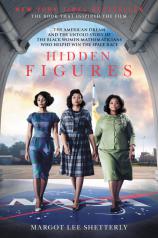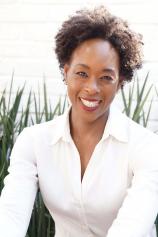Hidden Figures: The American Dream and the Untold Story of the Black Women Mathematicians Who Helped Win the Space Race
Review
Hidden Figures: The American Dream and the Untold Story of the Black Women Mathematicians Who Helped Win the Space Race
"The title of this book is something of a misnomer. The history that has come together in these pages wasn't so much hidden as unseen --- fragments patiently biding their time in footnotes and family anecdotes and musty folders before returning to view."
This line comes tucked into the very end of Margot Lee Shetterly's HIDDEN FIGURES, opening her acknowledgements, but I think it serves as a crucial frame. To some extent --- and with all due respect, which is a sizable sum --- I disagree. I think the history of these women has been hidden, insofar as it has been deliberately kept out of textbooks and, consequently, popular lexicon. When we think of the aeronautical boom today, we speak instead of the astronauts, we conceive of gawky, brilliant, skinny white boys. This is no accident, but a continuation of the very injustice and erasure that Shetterly confronts and combats with her work.
With HIDDEN FIGURES, Shetterly enacts a revolution no less crucial and pivotal as her subjects. Restoring the truth about the individuals who were at once black, women and astounding mathematicians, in a world that was constructed to stymie them at every step, is no easy task. Shetterly does it with the depth and detail of a skilled historian and the narrative aplomb of a masterful storyteller.
"This is a compulsively accessible work for anyone with an interest in history, science, civil rights, women's rights, or simply a great story."
At the same time, I do understand where she's coming from in her acknowledgements. Dorothy Vaughan, Mary Jackson, Katherine Johnson and Christine Darden --- their stories were never redacted, never actively diminished. We just never knew where to look. We didn't even know there was anything to find. Shetterly's own father was a scientist at Langley, and so she spent her own formative years in Hampton, Virginia, experiencing the reality of black scientists almost before she learned how anomalous and extraordinary it was. This highlighted the injustice: clearly, black women and men are more than capable of excellently executing these careers. Why has it been so hard for them, and how have we wronged them so deeply by keeping their stories "hidden"?
One of Shetterly's most adroit moves is to highlight the absurd simultaneity of America's technological advancements in tandem to its obsolete bigotry. These women worked to achieve their American dream: fulfilling careers, loving families and a commitment to their country, even when that country didn’t believe they were worthy of that dream. What a wake-up call, to recognize that our country was dreaming of putting a man on the moon before it could dream of a black woman at the front of the bus!
Shetterly traces the interweaving lives of these four women and their contemporaries, each as astounding as the next. They were not the only black female scientists, engineers and mathematicians of their time, and Shetterly uses their stories to highlight the swaths of quiet pioneers who helped bring a society into the future, even when that society refused to recognize their basic humanity. Katherine, Mary, Dorothy, Christine and their fellow black women computers were entrusted with some of the highest profile calculations --- with America's victory in the war, with humanity's conquests of the cosmos --- but were not entrusted to use the same toilets with their white counterparts, nor share their lunch tables. Shetterly is never heavy-handed, but always searingly honest, and it's refreshing and devastatingly frustrating that the injustices these women endured extended to their erasure from history.
These phenomenal women coped with systemic injustice on top of the complexities of their chosen careers. To be a NASA scientist is an enormous challenge in its own right. To be one while being a woman in the '60s is another triumph entirely, and to be one while being a black woman in the '60s is monumental, worthy of commemoration in a book no less committed and restorative than this one. And on top of these achievements, these women raised children! They maintained loving marriages, recovered after devastating losses, and participated in their local churches and activist groups, continuing the fight for the equitable rights that gave them chances their parents may not have had.
Shetterly's selected women are unquestionably heroes, in the names of science and equality. I am deeply grateful that she has found these incredible histories, and that she explores them so carefully and lovingly. Her work, along with the work of her protagonists, is expansive, necessary and triumphant. I hope she catalyzes a rise in this genre. As we move towards progress and equality, it is critical to recognize what has been hidden from us and the wondrous work that has been done before. This is a compulsively accessible work for anyone with an interest in history, science, civil rights, women's rights, or simply a great story.
Reviewed by Maya Gittelman on September 16, 2016
Hidden Figures: The American Dream and the Untold Story of the Black Women Mathematicians Who Helped Win the Space Race
- Publication Date: September 6, 2016
- Genres: History, Nonfiction
- Hardcover: 368 pages
- Publisher: William Morrow
- ISBN-10: 006236359X
- ISBN-13: 9780062363596





